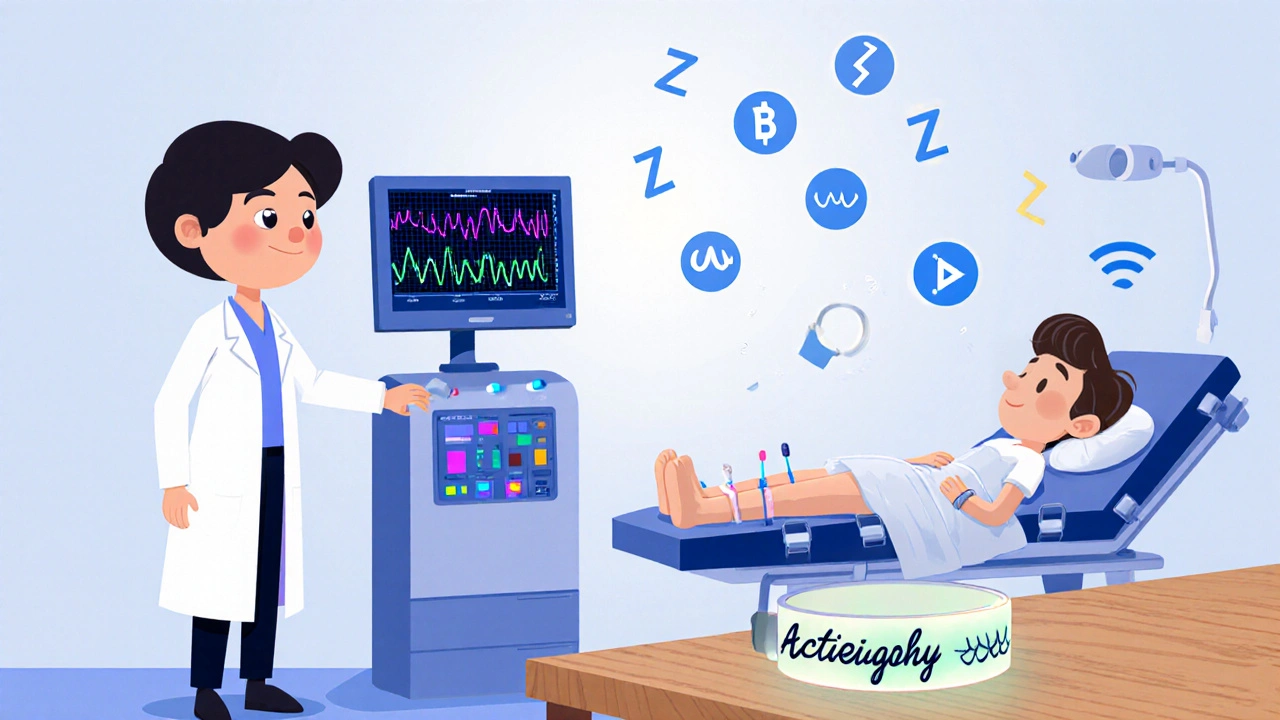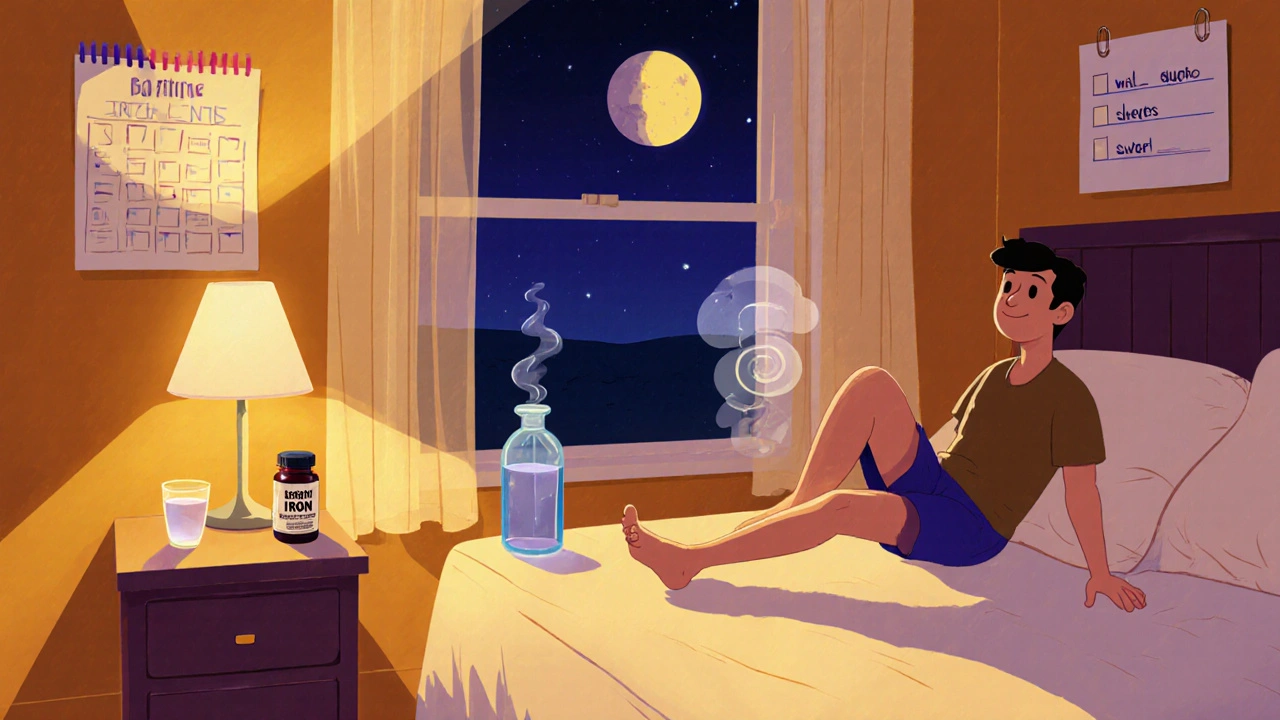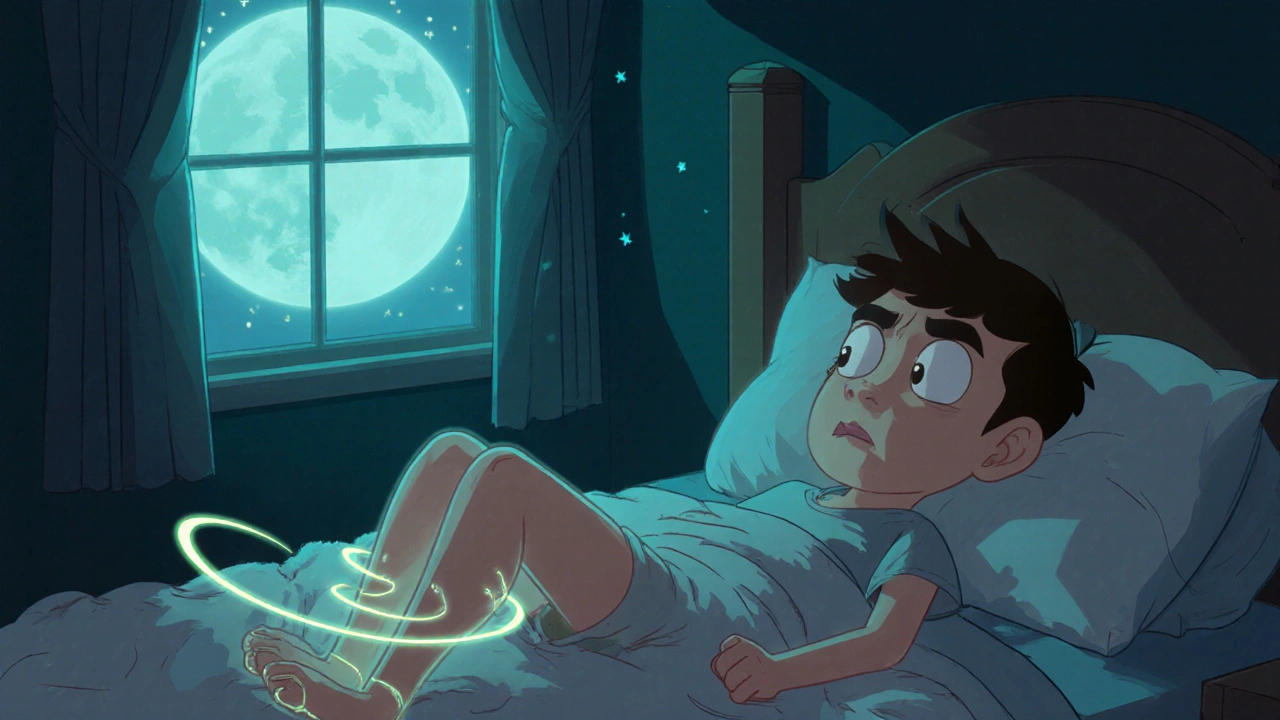RLS Sleep Quality Estimator
Estimate how RLS and your habits affect your sleep quality based on key factors from the article.
Your estimated sleep disruption will appear here
Restless Leg Syndrome is a neurological condition that creates uncomfortable sensations in the legs, often described as tingling, crawling, or burning, and drives an irresistible urge to move them. These sensations typically worsen at rest and peak in the evening, making bedtime a real challenge for many.
Sleep quality refers to how well a person sleeps, covering factors like sleep latency, duration, continuity, and how rested they feel in the morning. Poor sleep quality can lead to daytime fatigue, reduced concentration, and even long‑term health risks.
When restless leg syndrome collides with the need for restorative sleep, the result is a cycle of frequent awakenings, lighter sleep stages, and an overall drop in sleep quality. Understanding this interaction helps you spot the warning signs early and take steps to break the loop.
Key Takeaways
- RLS symptoms usually intensify at night, directly disrupting the ability to fall asleep.
- Fragmented sleep from RLS can lower total sleep time by 30‑60 minutes on average.
- Iron deficiency, dopamine imbalance, and certain medications are common triggers.
- Diagnostic tools such as polysomnography and actigraphy can quantify sleep disruption.
- Lifestyle changes, iron supplementation, and targeted therapies like CBT‑I can dramatically improve both RLS and sleep quality.
How RLS Disrupts Sleep
The leg sensations that define RLS typically appear when a person is seated or lying down. Because the brain interprets these signals as uncomfortable, it prompts repeated leg movements to provide temporary relief. Unfortunately, each movement briefly awakens the sleeper, resetting the sleep cycle.
Research from the National Sleep Foundation shows that people with RLS spend about 20‑30% more time awake after initially going to bed compared with those without the condition. Over weeks and months, this fragmented sleep reduces the proportion of deep, restorative slow‑wave sleep, which is essential for memory consolidation and hormone regulation.
Beyond the immediate night‑time effects, chronic RLS‑related insomnia can increase the risk of mood disorders, hypertension, and metabolic syndrome. The ripple effect underscores why addressing RLS early is a matter of overall health, not just a night‑time inconvenience.
Measuring Sleep Quality in RLS Patients
Objective sleep measurement helps clinicians differentiate between primary insomnia and RLS‑induced fragmentation. Two widely used tools are:
- Polysomnography: an overnight lab test that records brain waves, oxygen levels, heart rate, and leg movements. It can pinpoint periods of periodic limb movements that often accompany RLS.
- Actigraphy: a wrist‑worn device that tracks movement over several nights, providing a practical view of sleep‑wake patterns in a home environment.
Questionnaires also offer quick insights. The Epworth Sleepiness Scale rates daytime sleepiness on a scale of 0‑24; scores above 10 often suggest significant sleep disruption.

Common Triggers and Their Impact
Identifying what fuels RLS symptoms is the first step toward better sleep. Below is a quick snapshot of typical triggers and how they may affect nighttime rest.
| Trigger | Mechanism | Typical Sleep Effect |
|---|---|---|
| Iron deficiency | Low ferritin reduces dopamine synthesis | More frequent leg sensations, longer sleep latency |
| Dopamine imbalance | Altered neurotransmission in the spinal cord | Night‑time symptom spikes, fragmented REM |
| Pregnancy (third trimester) | Hormonal shifts increase nerve excitability | Night‑time awakenings, reduced total sleep time |
| Caffeine & nicotine | Stimulant effect on central nervous system | Exacerbated leg urges, lighter sleep stages |
| Medications (e.g., antidepressants) | Interfere with dopamine pathways | Prolonged symptom duration, increased night‑time movement |
Managing RLS for Better Sleep
Addressing the root causes often yields the biggest sleep gains. Here are evidence‑backed strategies.
- Check iron levels: A ferritin test below 50µg/L is a common red flag. Iron supplements (usually 325mg ferrous sulfate) taken on an empty stomach can raise ferritin within 4‑6 weeks.
- Adopt a regular sleep schedule: Going to bed and waking at the same times trains the circadian rhythm, making it easier for the brain to transition into deep sleep.
- Limit caffeine and alcohol after 2pm: Both can heighten leg sensations and disrupt REM cycles.
- Stretch and massage before bed: Gentle calf or foot stretches, or a warm foot soak, can temporarily relieve the urge to move.
- Consider medication: Dopamine agonists (e.g., pramipexole) are first‑line prescriptions. Discuss side‑effects with a clinician.
- Try Cognitive Behavioral Therapy for Insomnia (CBT‑I): This structured program reshapes thoughts and habits around sleep, often reducing reliance on sleep meds.
- Use Melatonin supplements (0.5‑3mg) to cue the brain that it’s nighttime, especially for shift workers.
For many, a combination of lifestyle tweaks and targeted treatment produces noticeable improvements within a month.

When to Seek Professional Help
If you experience any of the following, schedule an appointment with a sleep specialist or neurologist:
- Symptoms persist despite iron supplementation and lifestyle changes.
- Night‑time leg movements cause loud noises that disturb a partner.
- Daytime fatigue interferes with work or driving safety.
- You have comorbid conditions such as diabetes, kidney disease, or peripheral neuropathy.
Early intervention can prevent the cascade of health problems linked to chronic sleep loss.
Frequently Asked Questions
What time of night do RLS symptoms usually start?
Most people notice the sensations after they lie down, typically between 8pm and 11pm. The urge often peaks a few hours into sleep and eases after sunrise.
Can exercise worsen RLS at night?
Moderate daily exercise usually helps, but intense workouts close to bedtime may temporarily heighten leg sensations. Aim for a gentle walk or stretching at least two hours before sleep.
Is RLS hereditary?
Family studies suggest a genetic component, especially when the condition begins before age40. However, environment and health status also play big roles.
Will treating RLS improve my daytime alertness?
Yes. Restoring uninterrupted sleep often lifts daytime fatigue, improves concentration, and reduces the risk of mood swings.
Are there any non‑pharmaceutical options for severe RLS?
Beyond iron and lifestyle changes, some patients find relief with compression socks, pneumatic compression devices, or acupuncture. Results vary, so a trial period with a clinician’s guidance is recommended.

Comments (11)